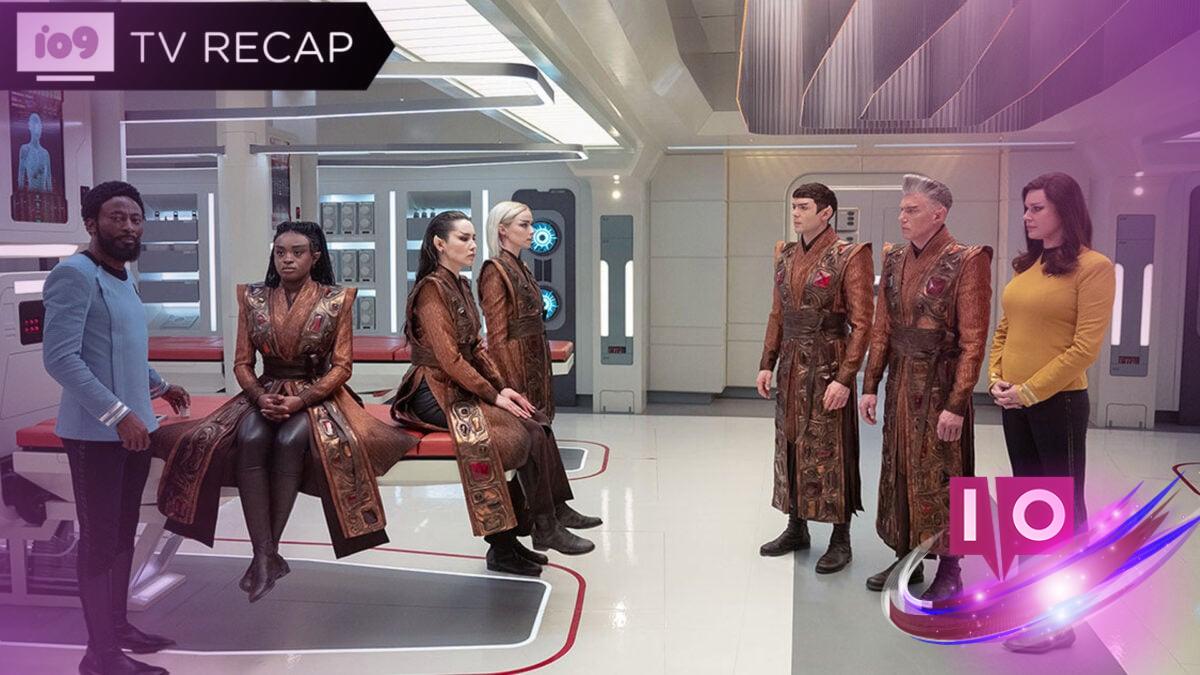At San Diego Comic-Con 2024, Paramount gave fans a tantalizing peek at Star Trek: Strange New Worlds‘ third season. The initial clip was puzzling, featuring Pike, Chapel, La’an, and Uhura transformed into Vulcans. This sparked debate on the immediate, racially prejudiced treatment of Spock as the half-Vulcan outcast among them.
Readers began to wonder: What was Strange New Worlds thinking when they chose to expose this kind of prejudicial humor as their first glimpse of a new season? Why focus so heavily on Spock’s heritage through a lens of discrimination? Did a Star Trek series just make racism a trait that can be passed down genetically?
Over a year later, the episode titled “Four and a Half Vulcans” was finally released, and the good news is: it’s not explicitly racist. However, it does romanticize lazy stereotypes assigned to Vulcan culture under the guise of comedy. At least racism isn’t shown as something inherited!
But let’s be honest: the episode flirts with various messy concepts, including Vulcan culture, gender dynamics, and closure in storytelling. Yet it leaps so eagerly to declare, “This is a silly episode!” that it fails to consider the broader implications of its contextual farce.
The episode is designed to be a distraction, presenting itself without context—which makes it appear even rougher. Considering what we’ve seen from Strange New Worlds this season, it might be even more perplexing, albeit not in the way that viewers initially anticipated.
In “Four and a Half Vulcans,” the Enterprise is set for a calm shore leave, but they receive a special request from Vulcan High Command. A pre-warp civilization, Tezaar, is at risk due to a looming radiation leak that could lead to a planetary disaster. As the Vulcans cannot intervene, they ask the Enterprise crew for assistance, but since the Tezaarians haven’t met other aliens and lack proper scanning technology, an away team undergoes genetic modification to appear Vulcan.
This away team includes Pike, La’an, Uhura, and Chapel. As shown in the initial teaser, they quickly embrace their Vulcan identities and complete the mission, but hilariously turn into rude characters, deriding Spock as “lesser” because of his human heritage. The actual situation on Tezaar takes a backseat to comic hijinks once the team grapples with their newfound identities and the comedic implications of their situation.
Yet the foundation of racial prejudice hangs over the episode. Moments after turning into Vulcans, narration attempts to justify their behavior by claiming that they have rapidly absorbed Vulcan culture. But this one-liner does little to alleviate the discomfort when just prior in “What Is Starfleet?” Spock had candidly recounted a traumatic experience of self-harm he faced due to his mixed heritage. The crew members capable of mockery include his captain and a romantic partner—making it even weirder.
The lack of awareness surrounding this “silly episode” becomes evident. “Four and a Half Vulcans” makes no effort to delve into Vulcan culture or the implications of its characters’ actions beyond surface humor. Like many of its predecessors in the series, this episode struggles with depth, offering slapstick and cheap gags rather than meaningful engagement.
Will this episode resonate with viewers as intended? The comedic stakes may falter due to its underlying themes. The humor tends to turn characters into caricatures, underplaying their complexities. For example, La’an’s Vulcan transformation leads to her seeking control over her crew and, by extension, the galaxy. Other characters, such as Uhura and Chapel, also grapple with misguided attempts to control situations through relationships or personal agendas, leading to cliché portrayals instead of genuine growth.
As for resolving the chaos stirred by their transformations, the Vulcan crew jokes about rejecting a cure and instead rely on Una and Spock to connect with their Katras, invoking none other than a guest star, Patton Oswalt, as a Vulcan linked to human culture. The humor feels forced, echoing a desperate plea for attention rather than genuine wit.
Ultimately, “Four and a Half Vulcans” resembles tired humor rather than a fresh story. It culminates without substantial character development and slams the reset button for the next episode. While Strange New Worlds has the potential to be far more engaging, this episode’s approach falls disappointingly short.
What themes does Star Trek explore regarding identity? The series often scrutinizes complex ideas about race and belonging but tends to shy away from meaningful exploration in favor of comic relief.
Is Vulcan culture depicted accurately in this episode? The handling of Vulcan traditions here serves as a vehicle for humor rather than a serious commentary on their rich cultural aspects.
Can comedy coexist with serious themes in a show like Strange New Worlds? Absolutely—shows that manage to balance levity with real character arcs often resonate more deeply with audiences.
It’s crucial for viewers to consider how a series like Strange New Worlds navigates humor and cultural sensitivity. The series has excelled at pushing boundaries, but it needs to ensure that its playful nature doesn’t obscure its storytelling.
In letdowns like “Four and a Half Vulcans,” we see the necessity for shows to engage with more than just surface-level interpretations, and that a thoughtful script can blend comedy with substance. Explore more about navigating these themes and the evolution of Star Trek at Moyens I/O.
